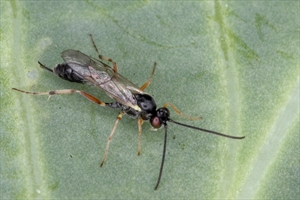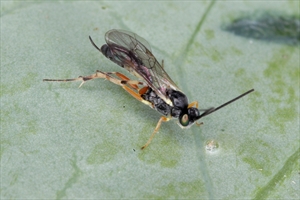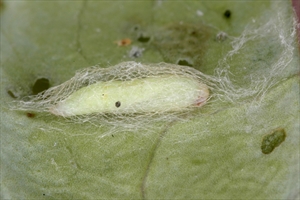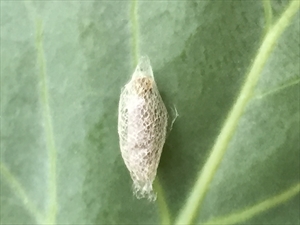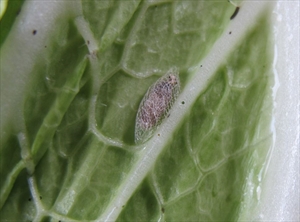Parasitic wasp
Pacific Pests, Pathogens and Weeds - Online edition
Pacific Pests, Pathogens & Weeds
Diadegma species (285)
Diadegma semiclausum, an ichneumonid (previously known as Diadegma euerophaga, Diadegma xylostellae, Angita cerophaga). The wasps belong to the family Ichneumonidae.
Diadegma semiclausum is native to Europe, but has been introduced into many countries in Asia, Africa, Oceania. It is established in Australia and New Zealand, but it has not established in other Pacific islands except Papua New Guinea where it is established in the highlands. The wasp has also been introduced into the highlands of India, Indonesia, Laos, Malaysia, the Philippines, Taiwan, Thailand, and Vietnam. In tropical countries, it does not survive below about 800 m.
Diamondback moth, Plutella xylostella.
Diadegma is most commonly found parasitising diamondback moth, although it has been reared from other species. It is a larval parasitoid, preferring to lay its eggs in small larvae, those that have just left their egg masses on Brassica leaves.
When the wasp approaches (Photos 1&2), the moth larvae may react with jerky movements, or drop from the leaf on silken threads to escape attack. Those that remain become the target of the wasp which quickly inserts a single egg into each larva (Photos 3&4). The larvae are parasitised once only as the wasp can tell if the diamondback moth larvae have already been attacked.
Parasitised moth larvae develop normally, and outwardly look the same as those that are unparasitised. However, when the moth develops a cocoon (Photo 5), the larva of the wasp makes its own cocoon inside and then develops into a pupa (Photo 6). After 8-10 days the adult emerges.
The life cycle of Diadegma is 18-20 days. The female wasp can live for about 25 days if a suitable sugar food is available. During that time it can lay many hundreds of eggs.
The parasitoid prefers temperatures in the range 15-25°C. Therefore, in tropical countries it is most abundant in the cooler highlands.
Diadegma is a very effective natural enemy of diamondback moth, and very high rates of parasitism (>90%) often occur, provided that broad-spectrum insecticides are not used.
Look for the small black wasps flying between brassica plants, often hovering near leaves damaged by diamondback moth larvae. Chemicals from the damage attrack them. Look for the wasps searching for diamondback moth larvae on the leaves. Look for Diadegma pupae which are formed inside the silken nets spun by the diamondback moths when they pupate. Diadegma pupae are oval-shaped, whereas those of diamondback moth are tapered at one end.
DANGERS FROM USING PESTICIDES
Diadegma is very sensitive to broad-spectrum insecticides, such as pyrethroids and organophosphates. They should not be used if the wasp is active in the crop, otherwise they will kill the wasp and make control of diamonback moth difficult. Instead, if an insecticide is required, use Bt, Baccilus thuriengensis, or another selective insecticide. Together, Diadegma and Bt can form the basis of an effective IPM program for diamondback moth.
AUTHORS Mike Furlong and Grahame Jackson
Information from Biological Services, Loxton, Australia. (https://biologicalservices.com.au/products/diadegma-20.html); and CABI (2019) Diadegma. Crop Protectiion Compendium. (https://www.cabi.org/cpc/datasheet/18644); and from CABI (2019) Diadegma semiclausum. Crop Protectiion Compendium. (https://www.cabi.org/cpc/datasheet/18678).
Produced with support from the Australian Centre for International Agricultural Research under project PC/2010/090: Strengthening integrated crop management research in the Pacific Islands in support of sustainable intensification of high-value crop production, implemented by the University of Queensland and the Secretariat of the Pacific Community.
